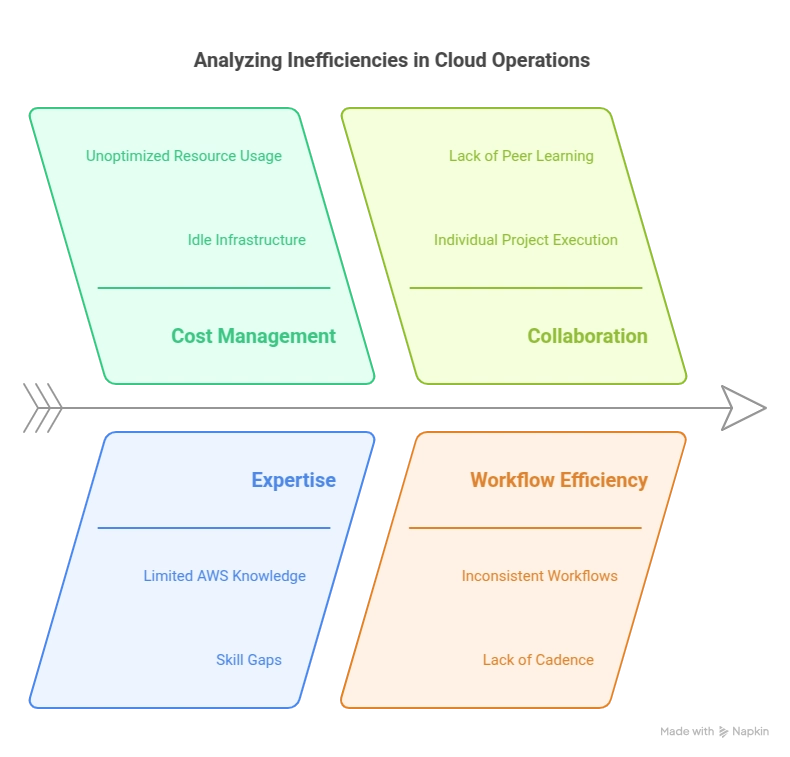This content originally appeared on DEV Community and was authored by Evandro Pires
It was 2020. The pandemic at its peak. A career shift. I stepped into the leadership role of an applied research team at a new company with a clear mission: to kick off a new era of technology-driven innovation.
This team had always played a pivotal role in the company’s journey. Over the years, it spearheaded experiments with emerging technologies that became true turning points. For instance, the team led the company’s transition to a cloud-native architecture, replacing legacy application servers with microservices—a move that laid the foundation for today’s platform, supporting dozens of products, more than 700 microservices, and over 1.2 million active monthly users.
It was also the team that explored and validated facial recognition and NLP-based chatbots—initiatives that earned international recognition. Long before ChatGPT made AI mainstream, we were already experimenting with language models. So when generative AI exploded, we were well-positioned to act fast.
But experimenting is very different from turning new tech into product. That’s where the real challenge lies. Especially in an environment where testing hypotheses was expensive and slow. That bottleneck was throttling innovation.
Working with innovation means embracing uncertainty—and accepting that most of what you try won’t work. Statistically, only a small fraction of ideas create real business value. If your success rate is 10%, and you want 10 validated ideas, you need to test 100. It’s basic math.
In 2020, our average cost per experiment was $186, and we were completing just 0.57 experiments per professional per year. Scaling innovation with those numbers simply wasn’t feasible. Hiring more people or increasing budget linearly wasn’t the answer.
We ran an internal assessment to understand what was getting in the way. Here’s what we found:
- Provisioned infrastructure that incurred cost even when idle;
- Limited AWS expertise, which slowed development and created bottlenecks;
- Projects executed individually, limiting collaboration and peer learning;
- Lack of a clear cadence in our workflows, leading to inconsistency and inefficiency.
That’s when I proposed a mindset shift: what if we adopted a serverless-first approach?
Instead of provisioning and managing infrastructure for each experiment, we would use AWS serverless services—only paying for what we actually used. Since our experiments didn’t require constant uptime or production-grade environments, serverless was a perfect match from both a technical and financial standpoint.
“Adopting a serverless-first mindset allowed the team to focus on what really matters: generating insight and validating ideas quickly, affordably, and with minimal operational drag.”
The team got on board. We launched a collective learning journey: we enrolled in courses together, ran internal challenges, and created a space for ongoing knowledge sharing. One of the highlights was the internal URL shortener challenge. The goal? Build it entirely using AWS serverless tools—at zero cost. Not only did it work, but it also sparked a DynamoDB modeling workshop that benefited the entire team.
Of course, the shift wasn’t just technical. We also reworked our team dynamics. We moved to pair programming, adopted two-week sprints, broke work into smaller, more manageable chunks, and ensured visibility across projects. This kept our momentum going—even when outcomes were uncertain. Learning became a constant.
With this new model in place, momentum picked up. A standout moment was when we were tasked with developing an electronic signature solution on a tight timeline. Thanks to our serverless-first foundation and the team’s growing maturity, we delivered a fully integrated, production-ready solution in just three months.
By 2021, the results were clear: we went from 0.57 to 1.25 experiments per professional, and the cost per experiment dropped from $186 to $45.
In 2022, things got even better: 2.11 experiments per professional, and just $39 per experiment. We had built a true innovation engine.
“When innovation becomes routine, impact stops being an exception and starts becoming strategy.”
Other wins soon followed. We built a no-code machine learning platform that allowed our clients to run models without writing code—featured on the AWS Blog:
https://aws.amazon.com/pt/blogs/aws-brasil/como-a-senior-sistemas-criou-uma-plataforma-de-aprendizado-de-maquina-no-code-utilizando-aws/
When generative AI gained traction, we didn’t scramble—we accelerated. We launched the AI Agent Factory, a fast and easy way for our product teams to build AI agents integrated into our systems, while abstracting away technical complexity. This also became a benchmark in the industry:
https://aws.amazon.com/pt/solutions/case-studies/bedrock-senior-sistemas/
https://aws.amazon.com/pt/blogs/aws-brasil/a-fabrica-de-agentes-da-senior-sistemas-utilizando-ia-generativa-para-aumentar-a-eficiencia-operacional/
Conclusion
As technology leaders, we need to understand that innovation isn’t just about having good ideas—it’s about creating the technical, cultural, and operational conditions to turn those ideas into business value.
Embracing a serverless-first mindset, combined with simple, structured, and collaborative processes, transformed our slow and costly experimentation into an agile, efficient, and high-impact innovation engine.
That decision we made back in 2021 laid the groundwork for everything we achieved when the AI wave arrived.
So here’s a question for you: how many ideas are going untested in your organization because of high costs or slow cycles? Maybe it’s time to rethink how you approach innovation.
About Me
This is Evandro Pires. I’m a husband, father of two, but also an AWS Serverless Hero, Serverless Guru Ambassador, CTO, Podcaster, and Speaker.
Cut costs and boost innovation by building a serverless-first mindset with sls.guru
Join our team and help transform the digital landscape for companies worldwide!
This content originally appeared on DEV Community and was authored by Evandro Pires

